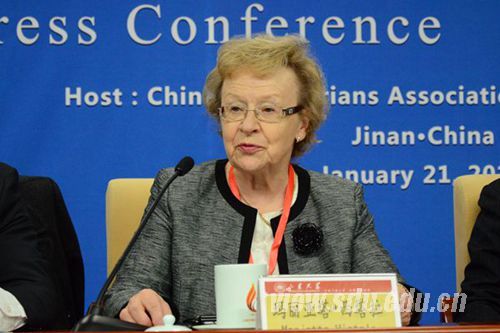
My visit to Shandong University is the third one. During my first tour in 2011 I had a pleasure to meet several historians and people at the international office. I learned how foreign students will be introduced to the Chinese culture and I learned about different dynasties and about recent excavations at the excellent museum of the Shandong University. I was very impressed when rare manuscripts were shown for me. The following visit in October 2013 was the meeting of the board of the International Committee of Historical Sciences connected to the Symposium of Regional Culture & Qilu Civilization.
Today during the lunch I had a possibility to discuss with professor Zhang Rong, the president of the Shandong University and some vice-presidents as well as with representatives of the Chinese Academy of Social Sciences, president professor Zhang Haipeng and professor Wang Jianlang. I was impressed how attractive the Shandong University is among students who want to study medicine, natural sciences and liberal arts, among those history. I was told that except the main content of medicine studies is western medicine, traditional Chinese medicine is not forgotten.
I came to Jinan in order to meet the organizers of the conference at the Shandong University, under the leadership of professor Fang Hui. Everything seems to proceed well. The logo of the conference is originated to Han dynasty and it is so beautiful! The best today was that I and my French colleague had possibility to ask questions concerning very informative webpage of the conference, which was introduced by experts of CYTS.
During the 1990s and in the first years of the 21st century the work of CISH has reflected the present trends towards globalization. In the program of the 22nd Conference in Jinan you can find very actual topics. The first major theme concern China from Global Perspectives, the second Historicizing Emotions, the third Revolutions in World History: Comparisons and Connections and the fourth Digital Turn of the History. In addition there will be 27 specialized sessions, 18 joint sessions, 19 round tables and four evening sessions.
Best result from the international conferences like this is: at first to open new aspects to history like for comparative research and secondly to strengthen the status of history in the global world. For individual participants the 22nd the coming conference shall offer a platform for networking and cooperation across national borders. In the coming conference we will have more participants from all continents than before.
Marjatta Hietala
President of the International Committee of Historical sciences